The Joker at 75: Terror with a Smile
April 25 marked the 75th anniversary of the first appearance of the Joker in DC Comics. Created by Jerry Robinson, Bill Finger and Batman creator Bob Kane, the Joker has endured as Batman’s most formidable foe. The Joker’s seemingly endless parade of death, destruction and torment has been the impetus for many of Batman’s most acclaimed and compelling stories over the years.
The Joker has become as celebrated as his adversary, and is considered one of the greatest comic book villains of all time – perhaps THE greatest. He has undergone many interpretations over the years: from eccentric killer to harmless trickster to sadistic psychopath. And yet, this character has latched on to the public consciousness and has become something of a fascination to casual and hardcore fans alike.
Let’s take a look at some of the most well-known cinematic interpretations of the Joker, and then delve deeper into the appeal of this maniacal clown. He bears striking resemblance to our spiritual adversary in motive and manner.
Cesar Romero – Batman (1966)
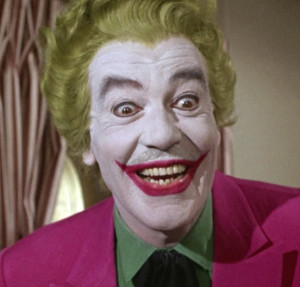 “A joke a day keeps the gloom away!”
“A joke a day keeps the gloom away!”
I do not like the 1960s Batman TV series. Never did, never will. This series, with its goofball tone and self-deprecating “humor,” set Batman back for years. It relegated the character into pop culture satire, making him an object of ridicule. The same went for the Joker.
Despite Cesar Romero’s apparent enthusiasm, the character is nothing more than an irritating prankster, seemingly waiting for Batman and Robin to come and thwart his antics. He’s not threatening and certainly not scary. It’s even more annoying that Romero refused to shave his mustache for the role, making the character look that much more ridiculous.
Jack Nicholson – Batman (1989)
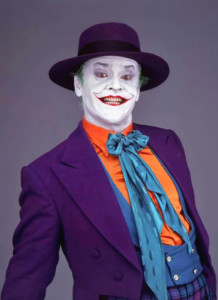 “Never rub another man’s rhubarb!”
“Never rub another man’s rhubarb!”
Nicholson’s Joker holds a special place in my heart. He was a good transition from the (unfortunately) well-known Romero version back into the psychopath we know him as today. Taking cues from Alan Moore’s seminal comic book, The Killing Joke, director Tim Burton and Nicholson infused this Joker with a maniacal narcissism and thirst for chaos.
This Joker was a “homicidal artist,” feeding his singular passion with the bodies of innocents simply because it was fun. The motive was vengeance at first, but his insanity caused the plan to erupt into a chaotic reign of terror. He was still sort of goofy, but he was dangerous and actually killed people. Seeing the Joker actually kill people was a bit of a shock to me as a kid.
Mark Hamill – Batman: Mask of the Phantasm (1993)
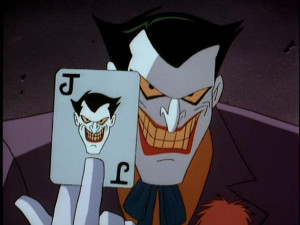 “Since my side-splitters don’t do it for you, how about a skull-splitter?”
“Since my side-splitters don’t do it for you, how about a skull-splitter?”
Batman: The Animated Series was a revelation. It was one of my favorite shows growing up. The stories were interesting and the art was phenomenal. The characters benefitted from a stellar team of creative people determined to tell great stories. Mask of the Phantasm was a filmic extension of the series and was of just as good quality.
Mark Hamill’s brilliant voice acting kicked up the intensity of the character in a way that Nicholson didn’t. The Joker was not only crazy and dangerous; he was an unrelenting force of destruction. His groan-worthy one-liners accentuated really violent situations with dark humor. This Joker started goofy, but turned dark quickly, especially when Batman foiled his plans.
Hamill’s laugh is still the epitome of Joker laughs. It’s fun to listen to, and yet absolutely terrifying in the right context.
Heath Ledger – The Dark Knight (2008)
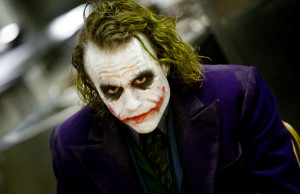 “Madness is a lot like gravity…all it takes is a little push.”
“Madness is a lot like gravity…all it takes is a little push.”
What director Christopher Nolan and Heath Ledger did in this film was take the Joker and make him as real as he could be. He was now a totally deranged sociopath with a “flair for the theatrical” – a seemingly 180-degree turn from Romero.
This is probably my favorite cinematic take on the Joker. Ledger definitely deserved the Oscar he posthumously received. For all the film’s realism, the Joker seemed to take on the role of a force rather than just a man. The other Jokers had at least a tinge of narcissism. Ledger crafted a force of nature, uncaring about his appearance or how he comes across.
“You ever danced with the devil in the pale moonlight?”
In all comics, with perhaps the exception of Captain America and the Red Skull, never has there been an adversarial relationship as stark in contrast as that between Batman and the Joker. They are exact opposites, and are exceptional personifications of their philosophies.
Batman represents an attempt at order in the midst of the chaos of the world. The Joker, as he describes himself in The Dark Knight, is an agent of chaos. In a sense, they feed into each other. There have been many stories over the years where one has had the opportunity to kill the other, and hasn’t done it.
In a strange sense, the relationship between Batman and the Joker is one of codependence. Batman has a need to fight the chaos the Joker inflicts, and the Joker almost wants Batman to stop him in order to keep his sick little cycle going. The Joker has a certain degree of respect for the Caped Crusader, and in his mind, life would not be as fun without Batman.
It’s even more interesting that the Joker takes the form of a clown – something seemingly fun and harmless (at least in the time the character was created). The evil of the Joker is amplified by his seemingly innocuous clown persona. No one expects a clown to kill someone.
I’ve never had any trouble with clowns. I went to the circus many times growing up, and for me, the clowns were some of the best parts. They seemed silly, free-wheeling and chaotic in a fun way. I thought they were funny and most of their antics genuinely made me laugh. When I thought of clowns, the image that came to my mind most of the time was of the clowns featured in the Disney animated feature Dumbo – silly, gag-a-minute fun.
A lot of people these days don’t like clowns, my wife included. What did it for her was seeing the film adaptation of Stephen King’s It at an impressionable age. For those terrified by clowns, they are strange, distorted human beings. The loud colors and exaggerated shoes, noses, etc. are unnatural. The makeup hides their identity, making their motives questionable.
“You have all these rules and you think they’ll save you?”
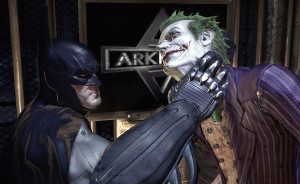 The Joker’s resonance hits something deeper in our consciousness. Satan, our spiritual adversary, is a wily being. While he may not have a purple suit and a face caked with makeup, his personality is definitely on par with someone like the Joker. This was best personified in The Dark Knight‘s interpretation. The Joker in this film made me uneasy in a profound way. I felt like I was seeing Satan’s personality being reflected in the character.
The Joker’s resonance hits something deeper in our consciousness. Satan, our spiritual adversary, is a wily being. While he may not have a purple suit and a face caked with makeup, his personality is definitely on par with someone like the Joker. This was best personified in The Dark Knight‘s interpretation. The Joker in this film made me uneasy in a profound way. I felt like I was seeing Satan’s personality being reflected in the character.
Ledger’s Joker continually wins over opponents with accusation, doubt and fear. This causes the protagonists to question themselves and exposes weaknesses for the Joker to exploit. Some of them give in to the accusations and lies, which leads to their downfall (Harvey Dent). And then when the hero falls, the Joker is the first one to twist the truth and make the hero believe himself responsible (“You let five people die…”), using it as an indictment of the entire system.
Satan attacks in much the same way. In fact, the name “Satan” comes from the Hebrew word for “accuser.” Satan tells all of us through suggestion and temptation that we are not worthy of God’s love because of the things we have done. He entices us away from God with promises of life on our own accord – a “world without rules,” so to speak. Then when we falter, he points it out and attempts to convince us of our hopeless situation.
“The thief comes to steal, kill and destroy…” John 10:10
The Joker doesn’t care about anything or anyone. Continuously in the comics and in film, he kills men, women and children alike without reason. His motive is destruction for his own sick amusement, and to prove the point that people are simply animals, waiting for a reason to snap. The Killing Joke took this concept to another level, with the Joker doing heinous things in an attempt to drive Commissioner Gordon mad.
Satan also has a point to prove. The difference is that Satan has a definite motive for causing pain and destruction to humans. Satan hates us – all of us. He has a grudge against God, and is trying to get at God the only way he can: by corrupting His children so they spend an eternity without Him.
Thankfully, we have a Savior who has saved us from this most evil of adversaries. I’m not talking about a fallible human being in a cape and cowl. I’m referring to God Himself in the form of Jesus. It is because of Christ that we shouldn’t fear death or Satan himself. If we put our faith in what Jesus has done, Satan’s power over us ends and we can step into the wonderful light of the Lord.
“Some men aren’t looking for anything logical. They can’t be bought, bullied, reasoned or negotiated with. Some men just want to watch the world burn.” Alfred Pennyworth, The Dark Knight
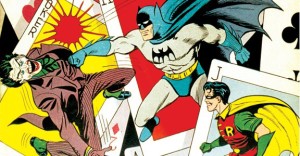 The Joker is a terrifying villain, and has haunted our imaginations for 75 years. He is seemingly simple, yet undeniably complex. Under the white visage lies a creature of pure malevolence – a demon masking as something that seems like childish fun. Other cinematic interpretations will come, with other filmmakers leaving their own stamp on the legacy – though I must say that the recently released picture of Jared Leto as the Joker for the upcoming Suicide Squad film does not fill me with confidence.
The Joker is a terrifying villain, and has haunted our imaginations for 75 years. He is seemingly simple, yet undeniably complex. Under the white visage lies a creature of pure malevolence – a demon masking as something that seems like childish fun. Other cinematic interpretations will come, with other filmmakers leaving their own stamp on the legacy – though I must say that the recently released picture of Jared Leto as the Joker for the upcoming Suicide Squad film does not fill me with confidence.
“Be sober-minded; be watchful. Your adversary the devil prowls around like a roaring lion, seeking someone to devour.” 1 Peter 5:8
Our spiritual adversary shares traits with the Clown Prince of Crime. He tempts us with perversions of truth and comes to destroy – to prove his point that people are one step away from turning from God. However, because of what Jesus did, we are free of Satan’s power. The grace of God has washed us clean in His sight. Our White Knight did what we couldn’t do ourselves: atone for our sins. To paraphrase Commissioner Gordon, he put his hands into the filth so we could keep ours clean.


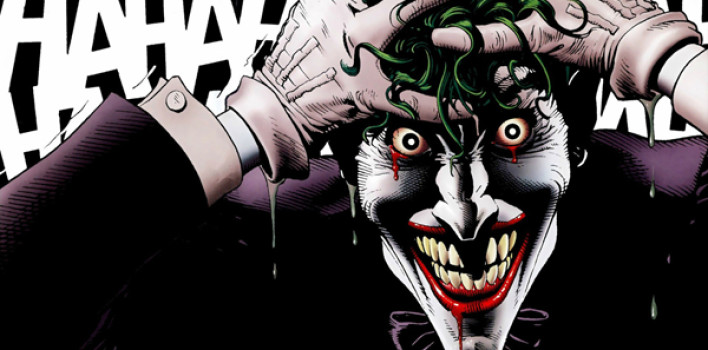

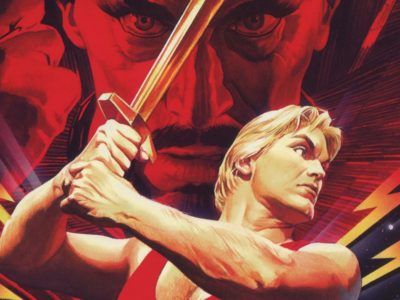
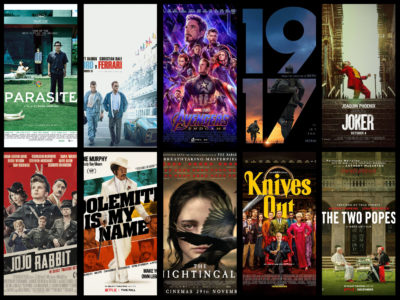


I enjoyed your post (despite your curmudgeonly attitude toward Batman ’66!) 🙂
I was recently struggling to describe Ledger’s Joker to my 13-year-old son in helping him decide whether he’d want to watch “The Dark Knight.” He has seen “Batman Begins” and liked it, but, as you know, TDK ratchets all the darkness up (or down, I suppose) several notches, especially where the Joker is concerned. The comparison to Joker as ha-satan, the accuser, is an apt one: pushing, pushing, *pushing* everyone up against the limits of their supposed morality. What I appreciate most about that film, and about the Joker’s function in it, is how he forces us to confess what Alexander Solzhenitsyn said, that the line between good and evil runs through every human heart.
My favorite Joker is probably Nicholson’s, but I will still argue that Romero’s, who was my first, is not without his charms!